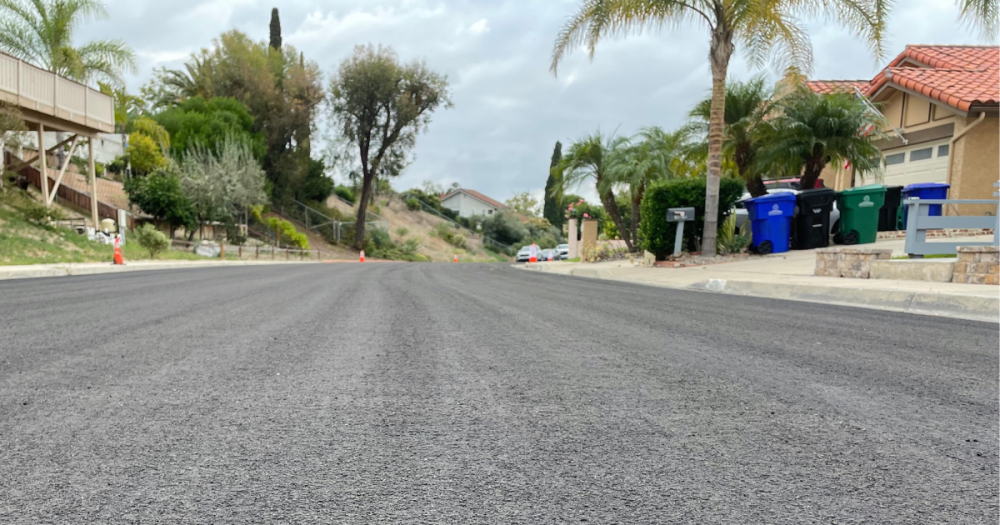New Road Repair Projects Begin in Rancho Peñasquitos, Sorrento Valley and Torrey Hills

Several City of San Diego communities will soon have improved and safer streets thanks to the start of a new slurry seal project, part of an overall effort to repair and resurface roads citywide. This week, the City will begin resurfacing streets in and around Rancho Peñasquitos, Sorrento Valley and Torrey Hills.
Preventing the deterioration of streets is vital to improving the overall condition of San Diego’s network of roads. It reduces the need for a more costly asphalt overlay and reconstruction for badly deteriorated streets.
Slurry seal is often completed in phases over several days or weeks, and multiple slurry seal projects are happening across the City simultaneously. The latest slurry projects will be completed, weather permitting, over the next three weeks. The following roads will be resurfaced:
- Priscilla Street
- Satanas Street
- Del Diablo Street
- Penasquitos Court
- Carolee Avenue
- Pageant Avenue
- Sundance Court
- Twin Trails Court
- Stimson Court
- Guadalimar Way
- Deron Avenue
- Cavalry Court
- Sparren Court
- Thunderhead Street
- Dufresne Way
- Ireland Lane
- Rowlett Avenue
- Togan Avenue
- Sundance Avenue
- Gunner Avenue
- Boomer Court
- Dax Court
- Rife Way
- Sienna Court
- Sparren Avenue
- Russet Leaf Lane
- Dufresne Place
- Racetrack View Drive
- Carmel Knolls Drive
- Azzuro Court
- Belvista Court
- Crest Knolls Court
- Serenata Place
- Tarantella Lane
- Intermezzo Way
- Prego Court
- Aida Street
- Fairwind Court
- Fairwind Way
- Shorepointe Way
- Shorepointe Court
- Pacific Shores Way
- Ocean Ridge Way
- Longshore Court
- Vereda Luna Llena
- Senda Luna Llena
- Calle Mar De Ballena
- Carrol Canyon Road
- Calle Mar De Armonia
- Fairport Way
- Calle Isabelino
Slurry seal is a cost-effective pavement preservation method consisting of asphalt emulsion, sand and rock. This mixture is applied to the street surface at an average thickness of a quarter inch and extends the life of already in-good-condition streets.
Streets are selected for resurfacing through a pavement management system that helps determine when to schedule streets. Each street segment is assigned an Overall Condition Index (OCI) score based on the pavement’s roughness and cracks.
To prioritize street paving, the OCI is used in conjunction with other factors, such as traffic volume, road type, equity, climate resiliency, mobility, maintenance history, other construction projects, and available funding. Repairs are often grouped within a neighborhood to include streets in similar conditions or performed after other projects, such as pipeline replacement.
View a map of street repair and other projects in your neighborhood by visiting the City’s interactive Project Finder map.
